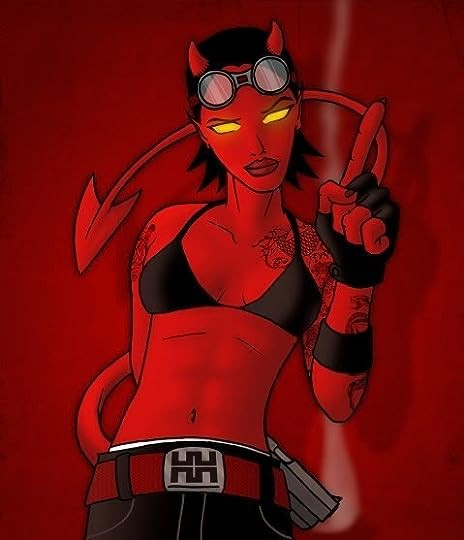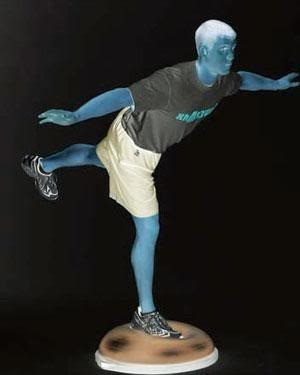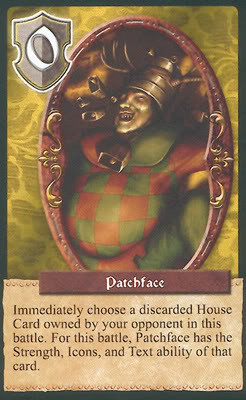The Chicago Tribune boldly declared A Song of Ice and Fire on par with Tolkien, a statement that, while enthusiastic, might initially raise an eyebrow from seasoned fantasy readers. Putting aside the initial hype, the series, and particularly A Dance with Dragons, stands as a monumental achievement in modern fantasy literature. This review delves into the intricate tapestry of George R.R. Martin’s A Dance with Dragons, exploring its strengths, weaknesses, and enduring appeal.
Initial Reactions and Returning to Westeros
After the divisive A Feast for Crows, the return to beloved perspectives like Tyrion, Jon Snow, and Daenerys felt like a homecoming for many readers. While characters like Arya, Brienne, and Jaime were missed, the anticipation of reconnecting with these core figures was palpable. Theon’s inclusion, though perhaps less eagerly awaited, promised a continuation of his harrowing and transformative journey.
However, the initial chapters with Tyrion reveal a character grappling with the aftermath of patricide and betrayal, submerged in self-loathing and fixated on the past. This melancholic tone, while understandable given his circumstances, sets a more somber stage than some might have anticipated.
Moments of Triumph and Intrigue
Amidst the heavier themes, moments of catharsis punctuate the narrative. The long-awaited demise of Janos Slynt, delivered with brutal finality by Jon Snow, is a particularly satisfying scene, resonating with a sense of justified justice within the grim world of Westeros.
The introduction of the Three-Eyed Crow, now a mystical tree-man, adds a layer of enigmatic intrigue. This character, shrouded in mystery, hints at deeper, more ancient forces at play, pulling readers further into the magical undercurrents of Martin’s world.
The reappearance of Theon Greyjoy, or rather, Reek, marks a significant turning point. His transformation into a broken, tortured shell of his former self is both disturbing and compelling. While his past actions are reprehensible, the glimpse of the old Theon beneath the Reek persona sparks a flicker of hope for redemption, or at least, further compelling narrative exploration.
Ramsay Snow: A Villain Analyzed
Ramsay Snow, later Bolton, emerges as a truly horrific antagonist. His backstory, interwoven with Reek and tales of depravity, paints a picture of pure, unadulterated evil. While undeniably effective in eliciting revulsion, Ramsay at times risks becoming a caricature of villainy. The comparison to his father, Roose Bolton, highlights this; Roose’s quiet menace often proves more chilling than Ramsay’s overt brutality.
 Ramsay Snow, a complex and disturbing villain in A Dance with the Dragons
Ramsay Snow, a complex and disturbing villain in A Dance with the Dragons
Image alt text: Ramsay Snow, a central antagonist in A Dance with the Dragons, known for his cruelty and depicted with a sinister gaze.
Exotic Locales and Familiar Faces
The return of Xaro Xhoan Daxos offers a welcome touch of exoticism and subtle menace. His flamboyant yet sinister persona adds a unique flavor to Daenerys’ storyline, hinting at the wider world beyond Westeros and its own complex political games.
Tyrion’s journey down the Rhoyne, culminating in the harrowing encounter with the Stone Men in the ruins of Chroyane, stands out as a chapter of exceptional writing and atmosphere. The eerie beauty and lurking horror create a memorable and unsettling sequence, arguably a highlight of the entire book.
Asha Greyjoy’s reappearance brings back a fan-favorite supporting character. Her grit, determination, and inherent Greyjoy stubbornness make her chapters consistently engaging. Her explicit scene, characteristic of Martin’s portrayal of the Greyjoys, reinforces their raw, often brutal, physicality.
Davos Seaworth and Wyman Manderly: Loyalty and Intrigue
The chapters featuring Davos Seaworth and Wyman Manderly are particularly rewarding, delving into the political fallout of the Red Wedding. Manderly’s seemingly jovial exterior masks a simmering desire for revenge, and his interactions with the steadfast Davos are rich with subtle intrigue and foreshadowing. The quest to find Rickon Stark in Skagos adds another layer of mystery and anticipation. The mention of Squire Wex, a minor character who has resonated with readers, further exemplifies Martin’s skill in making even peripheral figures endearing.
Melisandre’s Perspective and Daenerys’ Trials
Melisandre’s POV chapter provides a surprising and insightful shift. It humanizes a character often perceived as purely villainous, revealing her motivations as stemming from a belief in saving the world. Her internal struggles and interactions with Davos and Jon Snow offer a nuanced portrayal of her red magic and her complex role in the unfolding events. The revelation of Mance Rayder’s survival is a significant plot twist, adding further complexity to the Northern storyline.
Daenerys’ chapters, while acknowledged as well-written and emotionally resonant, are noted for their pacing. The intricacies of ruling Meereen, while crucial to her character development and the broader narrative, sometimes feel protracted. However, the spectacular set-piece of the fighting pits, culminating in Daenerys’ dragon flight, provides a thrilling climax and a much-needed injection of action.
Exploring Themes and Character Voices
A Dance with Dragons showcases a range of “Men in the Autumn of Their Years” voices, characters like Barristan Selmy who embody wisdom, honor, and a sense of fading glory. Barristan’s perspective offers valuable insights into Westeros’ rich history, fueling reader interest in the Targaryen dynasty and figures like Rhaegar. The tragic arc of Quentyn Martell serves as a poignant example of good intentions gone awry, highlighting the dangers of naiveté in a world as treacherous as Westeros.
The epilogue, a hallmark of the ASOIF series, delivers yet another impactful reveal. Varys’ reappearance, orchestrating further dramatic events, underscores his manipulative influence and sets the stage for future conflicts. This pattern of significant character reappearances or transformations in the final chapters (Daenerys in AGOT, Bran in ACOK, Catelyn in ASOS, Jaqen in AFFC) reinforces the cyclical nature of revelation and upheaval in Martin’s storytelling.
Astro-Freudian Analysis: Id, Ego, and Superego in Westeros
The original review takes an intriguing, albeit unconventional, turn by applying a Freudian lens to Martin’s characters, using Virgoan astrology as a framework. While this approach is more whimsical than academically rigorous, it offers a unique perspective on character motivations.
The Id: Embodied by the Greyjoys, Theon and Asha, representing raw ambition, physicality, and unchecked impulses, often leading to self-destructive paths.
 Theon Greyjoy, representing the Id in an Astro-Freudian analysis of A Dance with the Dragons
Theon Greyjoy, representing the Id in an Astro-Freudian analysis of A Dance with the Dragons
Image alt text: Theon Greyjoy’s character in A Dance with the Dragons, interpreted as embodying the Freudian concept of the Id, driven by primal urges.
The Superego: Represented by characters like Eddard Stark, Catelyn Stark, Davos, and Jon Snow, driven by duty, conscience, and altruistic ideals, often to their detriment in the morally grey world of Westeros.
 Eddard Stark, a Superego figure in A Dance with the Dragons analysis
Eddard Stark, a Superego figure in A Dance with the Dragons analysis
Image alt text: Eddard Stark, depicted as a representation of the Superego in A Dance with the Dragons, guided by strong moral principles and duty.
The Ego: Characters like Daenerys and Tyrion, attempting to balance their desires (Id) with their responsibilities and moral compass (Superego), navigating the complexities of leadership and survival.
 Tyrion Lannister, embodying the Ego in the Freudian analysis of A Dance with the Dragons
Tyrion Lannister, embodying the Ego in the Freudian analysis of A Dance with the Dragons
Image alt text: Tyrion Lannister, portrayed as the Ego in A Dance with the Dragons, constantly balancing his desires and responsibilities with sharp intellect.
While the Astro-Freudian analysis is a playful interpretation, it highlights the depth and complexity of Martin’s characters, whose internal conflicts drive much of the narrative tension.
Overall Assessment: A Flawed Masterpiece
Despite its length and occasional pacing issues, A Dance with Dragons remains a powerful and essential installment in the A Song of Ice and Fire series. The return of beloved characters, the introduction of compelling new perspectives, and the continued exploration of complex themes make it a rewarding, if sometimes demanding, read. The book excels in its intricate world-building, morally ambiguous characters, and shocking plot twists.
The review rightly points out minor flaws, including repetition in phrasing and moments where the sheer scope of the narrative can feel overwhelming. However, these are minor criticisms in the face of the book’s overall achievement. As noted by other reviewers, A Dance with Dragons delves into the intricacies of governance and identity, themes that resonate deeply throughout the series.
Final Verdict: Dive into the Dance
A Dance with Dragons is a sprawling, ambitious, and ultimately captivating entry in the A Song of Ice and Fire saga. It’s a book that rewards patient reading, offering rich character development, intricate political maneuvering, and unforgettable moments of both triumph and tragedy. For fans of epic fantasy and those willing to immerse themselves in Martin’s meticulously crafted world, A Dance with Dragons is an essential, albeit lengthy, dance worth taking.

